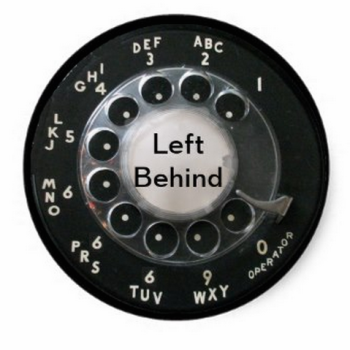Stop me if you’ve read this one before.
From March 4, 2013, “Concubines, literalism, inerrancy, and a great deal of money“:
So the Rev. Billy Ray, a third-tier televangelist, gets caught up in scandal when it’s revealed that the “tithes and offerings” he collected from his viewers went to support a lavish, decadent lifestyle.
The most damning feature of the scandal is Billy Ray’s “sex house” — a separate mansion from the one he shared with Mrs. Billy Ray. The sex house, it turns out, was where three of Billy Ray’s long-term mistresses lived. He provided them all with room and board and a generous “stipend” from his ministry. And he went there, regularly, almost daily, to have sex with one or more of these women.
Just to be clear, the Rev. Billy Ray is fictional — any similarity between him and any actual televangelist is purely coincidental (and, sadly, inevitable). But such a scandal is not difficult to imagine. Nor is it difficult to imagine the universal condemnation that Billy Ray would be subject to due to the audacious sinfulness of his “sex house” arrangement.
But this is a perfectly biblical arrangement. It is, in the pages of scripture, a common and a holy arrangement — one that Billy Ray has in common with some of the most righteous and revered figures of the Bible.
“Concubines.” Look it up. Get out a concordance and do a good old-fashioned evangelical word study.
The Bible is teeming with concubines. The Bible is filled with men who kept them, and whose keeping of them is presented as evidence of their prosperity and of divine blessing and reward for their righteousness.
“Concubine” is an archaic word and it describes an archaic arrangement. The idea seems so alien to our culture, our mores and values, that it’s hard for us now, in the 21st century, to read all those many tales of good men and their blessed concubines and fully absorb what we’re reading in those ancient stories.
A concubine wasn’t quite a wife and she wasn’t quite a slave. Wives and slaves were both considered “property,” and so were concubines, but they were a slightly different kind of “property” than either wives or slaves.
“Mistress,” I suppose, gets close to the idea. Yet we tend to think of mistresses as illicit and hidden and morally suspect, and concubines were none of those things. The arrangement was so unlike anything we’re accustomed to today that it’s hard to know even what sort of verbs to use to describe the arranging of such an arrangement. Did these men “have” concubines, or did they “take” them? Or maybe “take up with” them? The practice was formal, established, legally condoned and religiously sanctioned, but it was so different from anything we can imagine nowadays that we have difficulty discussing it.
And yet this practice, it turns out, is not all that distant from us historically. There do not seem to be any concubines or any system of concubinage in the New Testament, yet centuries later than that, here in America, the system was revived and it thrived for generations, once again enjoying legal and religious sanction just as it did in the time of Abraham and the time of David.












